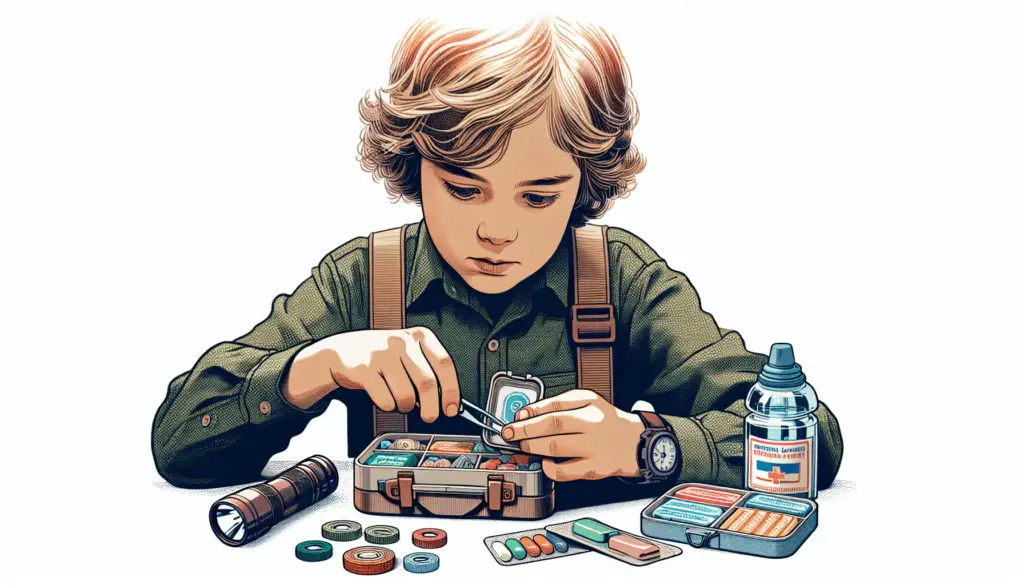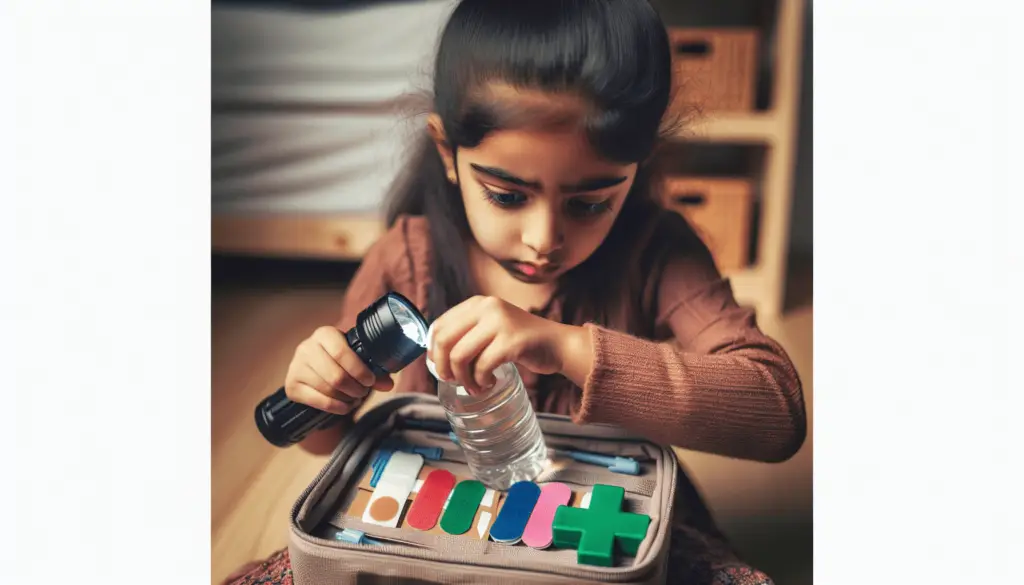Prepping For Families: Engaging Children In Survival Preparation
Have you ever wondered how to involve your children in survival preparation activities? Ensuring your whole family is on board with prepping is crucial for your overall family’s safety and well-being. As a parent, engaging children in survival preparation can be a fun and educational experience. Here are some tips on how to get your kids involved in prepping for emergencies.

Making Survival Preparation Fun for Kids
Survival preparation doesn’t have to be dull or scary for children. In fact, you can turn it into a fun and exciting activity for the whole family. By making survival preparation enjoyable, kids are more likely to participate and learn valuable skills that can potentially save their lives in the future.
Turn Learning into a Game
One way to make survival preparation fun for kids is by turning it into a game. Create a “survival scavenger hunt” where kids have to find and pack essential survival items like non-perishable food, water bottles, flashlights, and first aid supplies. This game not only keeps children entertained but also teaches them the importance of being prepared for emergencies.
Practice Survival Skills Through Role-Playing
Another fun way to engage children in survival preparation is through role-playing scenarios. Set up different emergency situations and have your kids act out how they would respond. This hands-on approach allows children to practice important survival skills like first aid, communication, and problem-solving in a safe and controlled environment.
Teaching Children Basic Survival Skills
It’s never too early to start teaching children basic survival skills. By equipping your kids with essential knowledge and abilities, you are empowering them to handle emergency situations confidently. Here are some basic survival skills you can teach your children:
Fire Safety and Building
Teach your kids how to start a fire safely using matches, lighters, or fire starters. Show them how to build a fire pit, gather firewood, and extinguish flames properly. Practice fire safety rules to prevent accidents and injuries.
First Aid Training
Basic first aid skills are crucial for children to learn at a young age. Teach them how to apply bandages, clean wounds, and perform CPR. Show them how to create a first aid kit and explain the importance of having one in case of emergencies.
Navigation and Orienteering
Teach your kids how to read a map, use a compass, and navigate their surroundings. Practice orienteering exercises in safe areas like parks or hiking trails. Show them how to find their way back home or to a designated meeting point in case they get lost.

Involving Children in Emergency Planning
Involving children in emergency planning is essential to ensure that they understand the family’s emergency procedures and protocols. By including kids in the planning process, they feel more confident and prepared to handle emergencies when they arise. Here are some ways to involve children in emergency planning:
Create a Family Emergency Plan Together
Sit down as a family and create an emergency plan that outlines what to do in different emergency scenarios. Assign roles and responsibilities to each family member, including children. Practice the emergency plan regularly to ensure everyone knows what to do in case of an emergency.
Designate Meeting Points
Identify and designate meeting points both inside and outside your home in case of evacuation. Teach your children the locations of these meeting points and practice getting there quickly and safely. Having designated meeting points ensures that everyone knows where to go during an emergency.
Establish Communication Protocols
Establish communication protocols with your children in case of separation during an emergency. Teach them how to reach out to you or other family members using phones, walkie-talkies, or other communication devices. Make sure they know important contact numbers and addresses by heart.
Building a Bug Out Bag for Kids
A bug out bag is a crucial survival kit that contains essential items needed for immediate evacuation during emergencies. When preparing bug out bags for your family, don’t forget to create one specifically for your children. Here’s how to build a bug out bag that is kid-friendly:
Include Comfort Items
Add comfort items like favorite toys, books, or snacks to your child’s bug out bag to provide emotional support during stressful situations. Familiar items can help calm children and reduce anxiety during emergencies.
Pack Age-Appropriate Supplies
Make sure to pack age-appropriate supplies in your child’s bug out bag, including clothing, shoes, and hygiene products. Consider your child’s individual needs and preferences when selecting items for the bag. Customize the contents to suit your child’s comfort and safety.
Teach Kids How to Use the Bug Out Bag
Before an emergency occurs, teach your children how to use the bug out bag and where to find it in the house. Practice packing the bag together and explain the purpose of each item inside. Encourage your kids to ask questions and familiarize themselves with the contents of the bag.
Incorporating Preparedness Education in Everyday Life
One of the best ways to engage children in survival preparation is by incorporating preparedness education into everyday life. By integrating survival skills and knowledge into daily routines, children are more likely to retain information and develop a sense of responsibility towards their own safety. Here are some ways to make preparedness education a part of your family’s lifestyle:
Teach Kids to Be Observant
Encourage your children to be observant of their surroundings and be aware of potential hazards. Teach them to recognize signs of danger, such as smoke, unfamiliar people, or unusual noises. Instilling a sense of awareness in children can help them avoid dangerous situations in the future.
Practice Emergency Drills Regularly
Conduct regular emergency drills at home to reinforce emergency procedures and protocols. Practice evacuation routes, fire drills, and sheltering exercises with your children. Make the drills fun and interactive to keep kids engaged and motivated to learn.
Discuss Real-Life Survival Stories
Share real-life survival stories with your children to illustrate the importance of being prepared for emergencies. Talk about how individuals use their survival skills to overcome challenges and stay safe in dangerous situations. Encourage kids to ask questions and reflect on what they would do in similar circumstances.
Conclusion
Engaging children in survival preparation is a proactive way to ensure your family’s safety and well-being during emergencies. By making survival preparation fun and educational, you can equip your kids with essential skills and knowledge that can potentially save lives. Remember to involve your children in emergency planning, teach them basic survival skills, and build bug out bags tailored to their needs. By incorporating preparedness education into everyday life, you are empowering your children to face emergencies with confidence and resilience. Start prepping with your whole family today and make safety a top priority for everyone.
